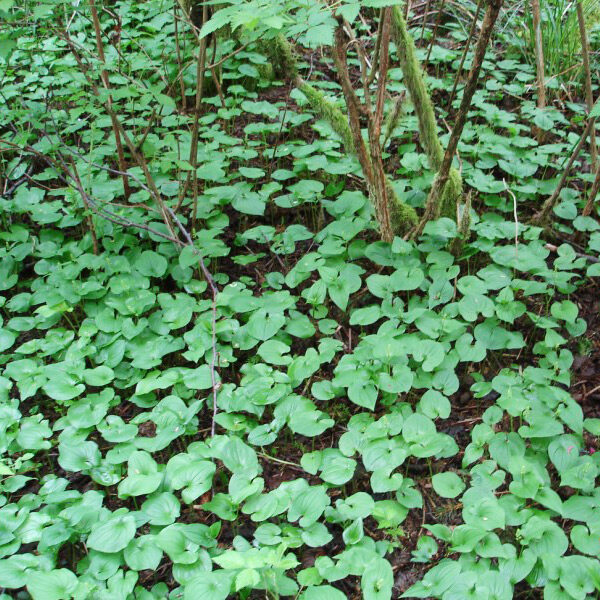False Lily-of-the-valley
Maianthemum dilatatum (A. Wood) Nels. & J. F. MacBr.

overview
Low-growing (10-25 cm tall) perennial from slender, branched, creeping rhizomes. Smooth, heart-shaped leaves up to 10 cm long, usually two per stem. Cylindrical shaped terminal clusters of small, white, delicately perfumed flowers stand above the leaves. Fruit is small, round, pale green /mottled berry which turns dark red (Pojar and MacKinnon, 1994). Photo by Dave Polster.
other names
two-leaved false Solomon’s seal
family
Liliaceae
ecological setting
Moist to wet shaded woodlands, and stream banks at low to middle elevations.
soil texture
Moist, slow draining, humus rich soils.
moisture regime
Moist, humus rich soils that don’t totally dry out in summer. Takes short periods of water-logged soil in winter.
shade tolerance
Shade to part shade.
landscaping
Groundcover in woodland areas or under shrubs.
first nations
Berries were used as food but not relished (Gunther, 1973). The Makah chewed roots and swallowed juice to correct sterility. The Quinault pounded roots and soaked them in water which was rubbed on sore eyes (Gunther, 1973). Several groups used the leaves on cuts; the Cowichan drank root tea to heal internal injuries (Pojar and MacKinnon, 1994).
flowering time
May
fruit ripening time
August
seed collection time
September
crop intervals
Annual
no seeds per kg
seed viability
collection and abstraction
seed storage
fruit seed dormancy treatment
vegetative propagation
Can be propagated from root cuttings in the fall.
additional info and photos
For more information and pictures, visit the E-Flora BC website at www.eflora.bc.ca.